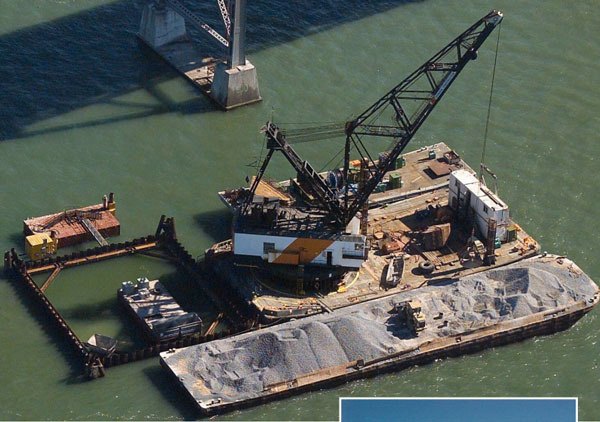A small flotilla of specialized vessels will be operating in Penn Cove next week to raise a 128-foot crab boat that burned and sank just outside the mussel rafts earlier this month.
Richard Walker, the on-scene spill coordinator with the state Department of Ecology, said Friday morning that it is still unclear just when the vessel will be raised, but confirmed that it won’t be any sooner than Monday.
However, hired divers surveyed the vessel this week to come up with a plan to lift the vessel and will continue to work through the weekend to prepare it for removal.
“We’re working full days, sunrise to sunset, to get this thing out of here as soon as possible,” Walker said.
The Deep Sea, which had been illegally anchored in Penn Cove for months, caught fire and then sank May 13. Although the vessel was thought to have less than 100 gallons of fuel on board, thousands were recovered from the ship’s tanks and from the surface.
The leaked fuel prompted state regulators to close the cove to shellfish harvesting and it’s not yet clear when it will be reopened.
While the Coast Guard initially led the containment and clean up efforts, the Department of Ecology took over last week and has been working with the state Department of Natural Resources on the vessel’s removal.
Ecology officials have confirmed that Global Diving and Salvage, a firm with offices all over the West Coast that specializes in marine construction and casualty response, will be handling the raising operation.
The agency maintains a standing emergency response contract with the salvage company. Funding for the project was unknown at press time but Ecology spokesman Larry Altose said it would likely come from a combination of Department of Ecology and state Department of Natural Resource funding sources.
The cost of the operation and disposal of the vessel were also unknown but previous estimates by natural resource officials have hovered around $750,000. The state is planning to seek reimbursement from owner Rory Westmoreland, but it’s unclear whether those efforts will be successful.
The state did take official steps to take possession of the vessel earlier this week when divers posted a laminated Notice of Intent to Obtain Custody of the Deep Sea on the captain’s chair.
Like claiming an abandoned vehicle or posting an eviction notice, it’s a legal step that has to be taken.
“As funny as it sounds, that’s the legal process and it has to be followed,” Altose said.
The divers that will be working through the weekend will be preparing the vessel for lifting. The efforts will include using water hoses to clear silt from beneath parts of the vessel and to clear mud that has accumulated inside.
Once the efforts have concluded, two large cranes that may arrive as soon as this weekend -— a 62-foot diving support vessel arrived Thursday — will use chains to lift the 340 ton crab boat to the surface. Depending on its condition, it then can be towed or put on a barge and taken to a scrap yard.
Arrangements for the vessel’s final destination had not been hammered out as of Friday morning.
According to Walker, the Department of Ecology’s role will be to ensure that the operation results in as little pollution as possible. Not all the ship’s fuel tanks could be inspected during earlier diving efforts and the state agency wants to be ready for a spill.
“We want to be fully prepared if anything goes wrong,” he said.
Containment booms will remain around the vessel throughout the operation and state officials will be monitoring water quality visually and with water samples. He did warn that observers will likely see silt stirred up from the bottom and should not be alarmed.



